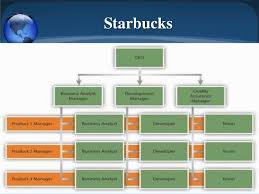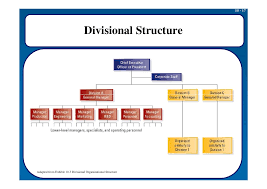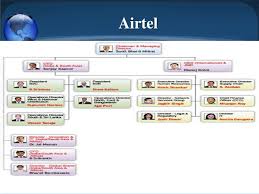The organizational structure examples are usually a subject of study so that there can be a perfect structure for a particular company. It helps an organization decide how the authority passes on, how message communication happens. There are several types of corporate structures (organizational structures), and organizations choose the one most suitable for them.
Importance of an organizational structure
Organizational structure is extremely important during a business. It helps managers manage the human resources issues. Allows managers to tackle as to how employee treatment occurs in the organization. It also helps employees understand what are their positions, who are they reporting to and who reports to them. It helps create a hierarchy within the business. Without a corporate structure, it would be extremely difficult to access who is responsible for what. A well-maintained organizational structure can provide a roadmap for the advancement of employees within the organization which helps motivate employees to achieve their goals.
Types of organizational structures and organizational structure examples
Matrix structure
A matrix structure is the one in which employees are answerable to more than one managers. A matrix structure derives its qualities from different structures. The matrix structure followed by Starbucks coffee is one of the best organizational structure examples. The primary reason for the firm’s success is its structure. Different organizational structures that combine to form Starbuck’s matrix structure are divisional structure, functional structure, and team-based structure.
Functional Structure
The functional structure in the firm’s organizational structure divides different functions into different groups such as the marketing department, finance department and human resources department. In a divisional structure, the company’s division is on geographic terms.
In the global market, Starbucks has three major divisions: 1. America, 2. Europe, Middle East, Russia and Africa and 3. China and Asia-Pacific. Each division has a vice president. This way, each manager answers to two superior managers, the geographic head, and the functional head. Moreover, in the divisional structure, the firm’s division is also product wise. Starbucks produces several products now including coffee, canned products, merchandise, bakery products and soon. Starbucks has teams at the lower level. For example, in their cafes, they have teams to make products and deliver them. Other firms that use matrix structure are Walmart, Apple and Dell.

The figure on the left demonstrates the matrix organizational structure of Starbucks. It can be seen here how the authority flows in two ways. First, the authority is flowing vertically downwards through business analyst manager, development manager and quality assurance manager. Second, the authority is flowing horizontally sideways through product 1, product 2 and product 3 managers. This flow of power in two ways is the reason why the organizational structure is actually called the ‘matrix’ structure.
There are several advantages of a matrix structure. Firstly, it uses the resources of the organization efficiently and to the full, because one person is doing multiple jobs. Moreover, new employee hiring is not done, instead existing employees are given extra jobs. Secondly, no inductive training or orientations are given, leading to less wastage of the firm’s resources. Thirdly, employees motivation is high because they are being rewarded through new jobs and better pay; they will work better and more efficiently.
Divisional structures
Divisional structure is the one in which an organization’s division is on grounds of regions or products. Regional divisional structure followed by PepsiCo is another one of the best organizational structure examples. The regional divisions of PepsiCo include North America Beverages (NAB), Latin America (LA), Europe Sub-Saharan Africa (ESSA), Quaker Foods North America and Asia, Middle East & North Africa (AMENA).

The diagram shows how the regional divisional structure works. There is board of directors at the top that usually has a CEO (chief executive officer). The CEO then controls the Northern, Eastern and Southern Divisions. Just like this example, PepsiCo has a board of directors and a CEO, Indra Nooyi, who control all the regional divisions through regional managers appointed at those regions. Other companies following divisional structure are Unilever, Engro and Reckitt Benckiser.
Advantages of Divisional Structure
There are several advantages of the regional divisional structure. First of all, the performance of each division’s assessment can be done separately, and decisions can be made through their performance. If divisions did not exist, the organization will not know which places are profitable and which are making a loss. Secondly, the divisions are more responsive to changes in demand in that particular market, because they are aware of the market and the preferences of the people there. Thirdly, Divisional structure allows the firm to make different products for different regions, for example, many companies have different product ranges in different countries.
Functional structure
A functional structure is the one that divides the major functions of a firm into different groups, for example, information technology (IT) department, finance department, marketing department and production department. Airtel is a leading telecommunication company in India. Airtel has a functional structure which is one of the best organizational structure examples. It has directors for supply chain, marketing, human resources, technology, customer care, legal works and so on. Each of these directors controls their departments and are answerable to what their functional department is responsible for.

The figure explains the functional structure of Airtel and other companies who use functional structures. The top of the structure has the board of directors, then there usually is a CEO and then comes the functional divisions such as sales, marketing, production, finance, human resources and so on. Each of these divisions has a manager and a team of employees who achieve their set goals by working together.
Advantages of a functional structure
There are several advantages of functional structure too. Firstly, when the specialist workers of a particular field are in a group together in a functional division, there are high chances that the function will be successful and the organization will be successful, ultimately. Secondly, the speed of completion of the tasks in the organization will increase when specialists will be doing the job. An increase in speed in each department will increase the speed of the entire process. Last, but not the least, dividing employees into functional units eliminates any confusion about task performance and prevents the duplication of work. Each employee of each department has clear guidelines about task performance.
Last modified: August 7, 2018









